The history of exploration and exploitation of the Earth’s outer space is inextricably linked with the fair sex. And we are not only talking about cult personalities such as Vera Rubin, Jocelyn Bell or Sally Ride. We should also remember many other women, who made things that are common today possible.
Commemorating the International Day of Women and Girls in Science, The Universe Space Tech editorial team would like to tell you about several women behind the scenes of cosmonautics.
Space seamstresses
Anyone at least slightly interested in the history of astronautics can probably visualize a spacesuit used by the Apollo astronauts down on the Moon. Those suits protected the bold humans from temperatures ranging from -180°C to +130°C, and from dust and from micrometeorites.
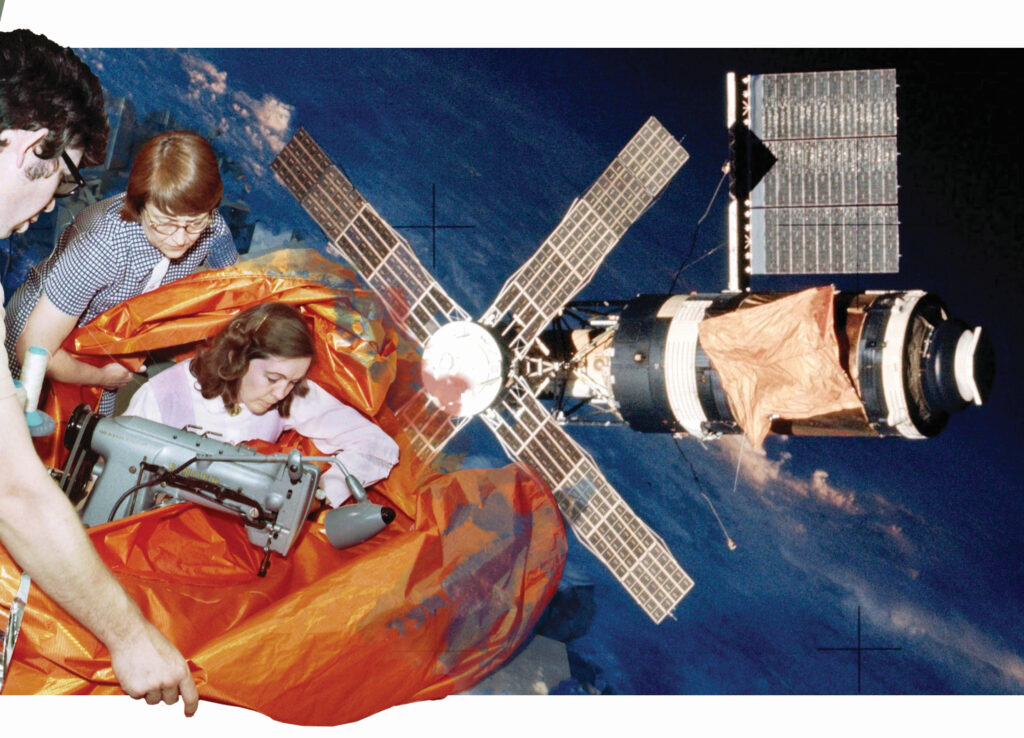
But few people ever think about how exactly these spacesuits were made. And they, of course, were sewed. This was done by the employees of the ILC Dover Company. They were trained to read drafting, to interact with engineers, to perform high-precision sewing using the latest threads and many thinnest layers of special fabric. Due to the huge value, the latter was stored in a special safe.
Every seam has been thoroughly inspected and tested. Astronauts who were preparing for a flight to the Moon periodically came to the workshop to try on spacesuits. Finally, specialists X-rayed the finished equipment to make sure that there were no foreign objects left inside.
In 1973, space seamstresses actually saved America’s first orbital station, Skylab. The fact is that the protective screen broke off during the launch. Therefore, NASA urgently ordered a special “patch” that would close the breach. It was produced by Eileen Baker from the General Electric Company. She had sewn the coat as big as 6.7×7.3 m, which consisted of very thin layers of aluminum and nylon. Then Baker’s product was delivered to the station by a repair expedition and successfully installed on the hull of the “heavenly laboratory”, making it possible for people to stay on it.
Since then space seamstresses were also not sitting idly. In particular, they created thermal insulation blankets for shuttles and thermal barriers. Even today, hand sewing is still used in the aerospace industry — especially in cases where the material is too sticky or the seam needs to be made in a place that is difficult for a machine to reach.
The “mother” of the Hubble telescope
The Hubble telescope has long deserved a prominent position in the history of science. As one of the scientists aptly remarked, it allowed humanity to peek into some nooks of the universe, of whose very existence we had not been aware before. Of course, Hubble was a collective project, but we should mention the contribution of several women who played the most important role in its realization.
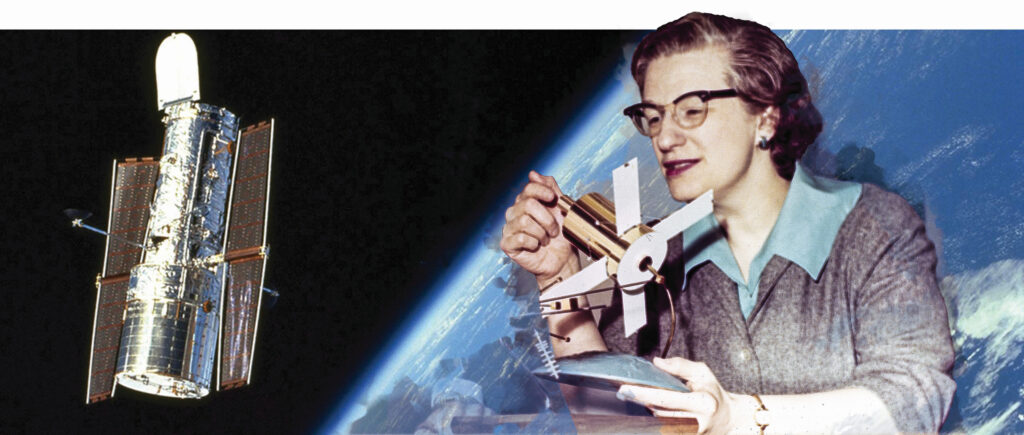
The first of them is Nancy Grace Roman. At the beginning of her scientific career, she worked in several American observatories. In 1959, she joined NASA as head of the astronomy department, becoming the first woman appointed to a leadership position in the space agency. Roman was engaged in a number of different programs. She participated in the launch of several orbital solar observatories and scientific satellites, developed plans for other space missions.
The final project that Nancy worked on at NASA was the Hubble telescope. She participated in the initial planning of the program, laying down its basic structure. But Roman’s contribution was not limited to this. According to colleagues, she literally managed to “sell” the idea of a space telescope and organized an astronomical society, persuading the American Congress to finance the ambitious project. For this, Nancy received the flattering nickname “Mother of Hubble”. Recently, the next-generation NASA’s infrared telescope was named Roman. It is to be launched in 2025.
Also, we cannot fail mentioning the senator from the state of Maryland, Barbara Mikulski, whose contribution was also invaluable. She not only actively supported the telescope project at the stage of implementation, but also helped give it a second life.
The fact is that after the crash of the shuttle Columbia, NASA decided abstain further servicing expeditions to Hubble, considering them too risky. In fact, this meant a quick shutdown of the telescope: by that time, many of its key components had been exhausted. However, Mikulski opposed this decision and initiated a campaign to convince the Aerospace Administration to save Hubble. As a result, yielding public pressure, NASA management gradually changed its position. In 2009, the last maintenance expedition visited the telescope, which gave it at least ten additional years of life. For her contribution to the history of the project, Mikulski also earned an honorary nickname. She was called the “Godmother of Hubble”.
Let’s also mention the astronaut Catherine Sullivan. In 1984, she became the first American woman spacewalking, and in 1990 she took part in the mission that put the Hubble telescope into orbit. In the event of an emergency, Catherine was supposed to walk into space and help eliminate the problem.
Meanwhile as immaculate a scientific instrument might be, it worthless without the people operating it it. And here we should mention Dr. Wendy Friedman. In the 1990s, she led a team of researchers whose goal was to determine the rate of expansion of the universe. Based on Hubble data, they were able to measure this indicator and determine that the Big Bang occurred 13.7 billion years ago. This was a huge breakthrough in astrophysics, because before that the age of the universe had been estimated to be between 9.7 and 19.5 billion years.
The woman who was first to fly around Mir station, put the Chandra telescope into orbit and checked the safety of the shuttle
The name Eileen Collins is hardly known to anyone outside a narrow circle of space enthusiasts. But she took part in three iconic space missions, two of which she was the commander.
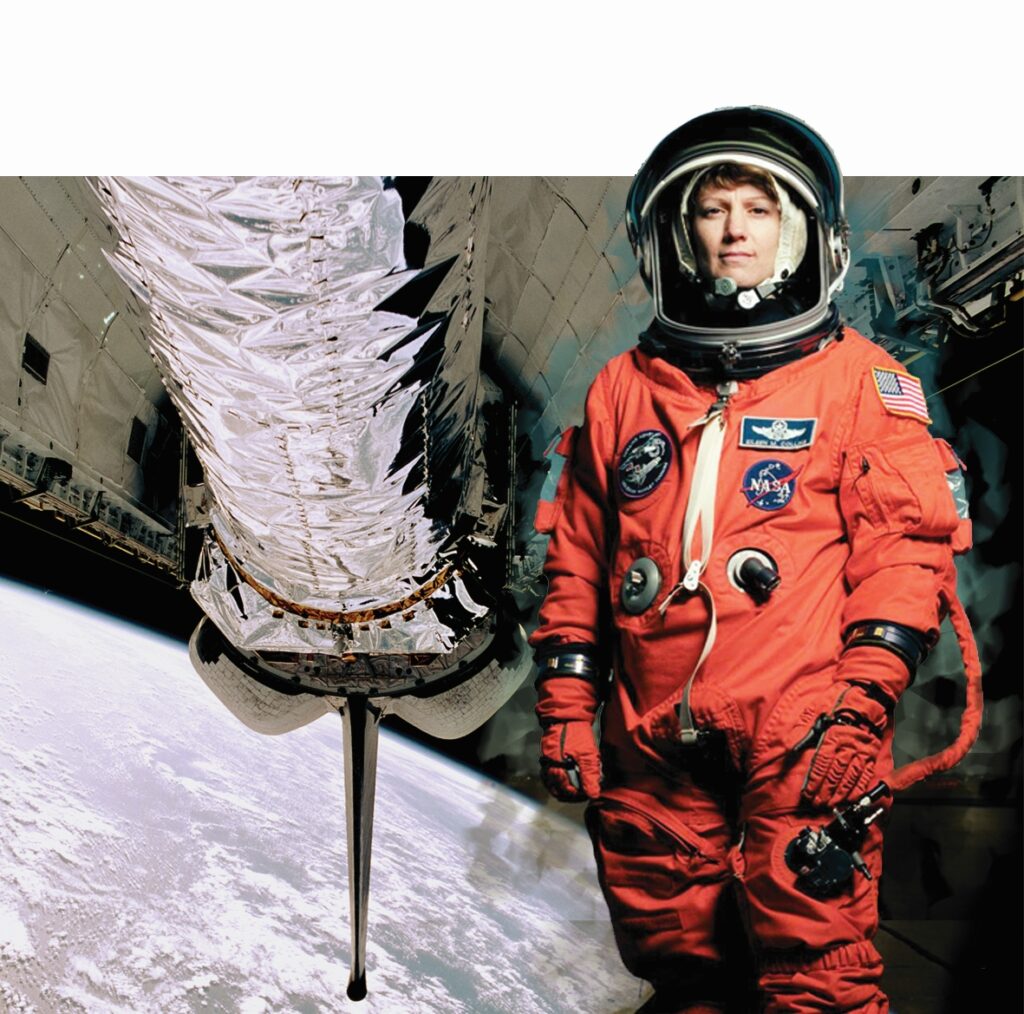
Collins shifted to NASA’s astronaut corps from the ranks of the US Air Force. She first flew into space in 1995 as a pilot of the winged spaceship Discovery. The objective of the flight was to practice the approach maneuver with the Mir station. For the first time in history, an American shuttle orbited a Russian orbital station. Two years later, Collins visited Mir again and this time her craft docked the station.
In 1999, Collins was appointed the first-ever woman to command shuttle. She had a very responsible mission — to position the Chandra X-ray telescope into its proper space. Taking into account the acceleration unit, its mass was 22,753 kg. It was the heaviest cargo ever carried by the Space Shuttle program.
The launch of Chandra was accompanied by a number of problems. A gold pin broke off and punctured the tubes supplying hydrogen to the engines’ combustion chamber, resulting in a reduction in thrust. Another problem was a short circuit that disabled the control units of two of the shuttle’s three power units. This created a threat of their turning off, which at this stage of the flight would almost certainly result in the crash of the craft. However, competent actions of the crew and the availability of spare components made it possible to prevent a disaster. Chandra was successfully put into orbit and is still operating, with roughly the same status as Hubble.
Collins last visited space in 2005. She commanded the first manned mission after the loss of Columbia. Its objective was to test the shuttle’s new safety systems and the delivery of cargo to the ISS. The successful completion of the mission made it possible to begin the final stage in the history of winged spacecraft.
NASA’s Women-Computers
In the early years of space exploration, even the best computers were huge (each of them occupied an entire room) and at the same time they were not very powerful. Humans still outperformed them in many ways, such as performing quick calculations and graphing. So in those years, NASA used “living computers”—calculators, most of whom were women who had degrees in math or just knew how to do quick computations.
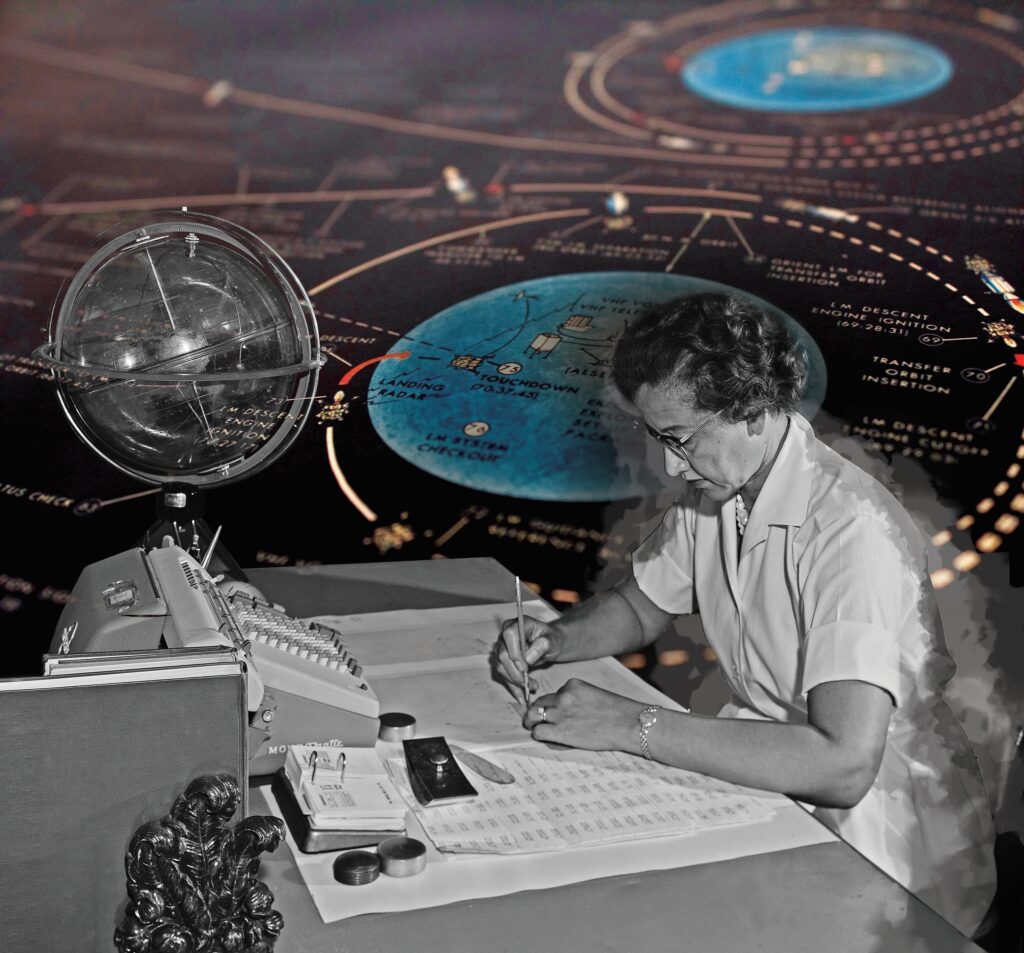
One of the most important tasks of “living computers” was data analysis and trajectory verification. In the case of a successful launch, the spacecraft began to send telemetry to Earth, reporting its location and state. This information was a set of numbers. They had to be used in formulas along with other constantly changing parameters, such as speed, mass, gravitational influence from celestial bodies, etc. Then, after determining the actual location of the device, it was compared with the planned trajectory, which made it possible to check the correctness of the pre-flight calculations.
It was the story of “living computers” that formed the basis of the 2017 film “Hidden Figures”, which tells the story of three African-American women (Kathryn Johnson, Mary Jackson and Dorothy Vaughan) who did mathematical calculations for NASA in the late 1950s and early 1960s .
Interestingly, even after NASA acquired computers capable of performing the necessary calculations, many specialists did not trust the technology and preferred to use humans to re-examine the calculations. Many people know the story that John Glenn did not want to go into space until Kathryn Johnson personally checked the computer calculations and confirmed their correctness.
By the way, even the gradual transition to the use of machines did not render “living computers” jobless. Many of them later became NASA’s first programmers. For example, Kathryn Johnson helped compile the computer program that calculated the launch and descent parameters of the lunar module of the Apollo 11 mission. And later, during the Apollo 13 accident, she was able to calculate the parameters of the new trajectory of the ship’s return to Earth in time. Doing that, Johnson did not use machine calculations, but her own astronomical tables. It is believed that it was she, who saved the lives of astronauts.
A female head of the space program
While Nancy Roman planned space missions and Eileen Collins launched telescopes into space, Margie Townsend had the honor of creating them. She made history as the first female head of NASA’s space project.
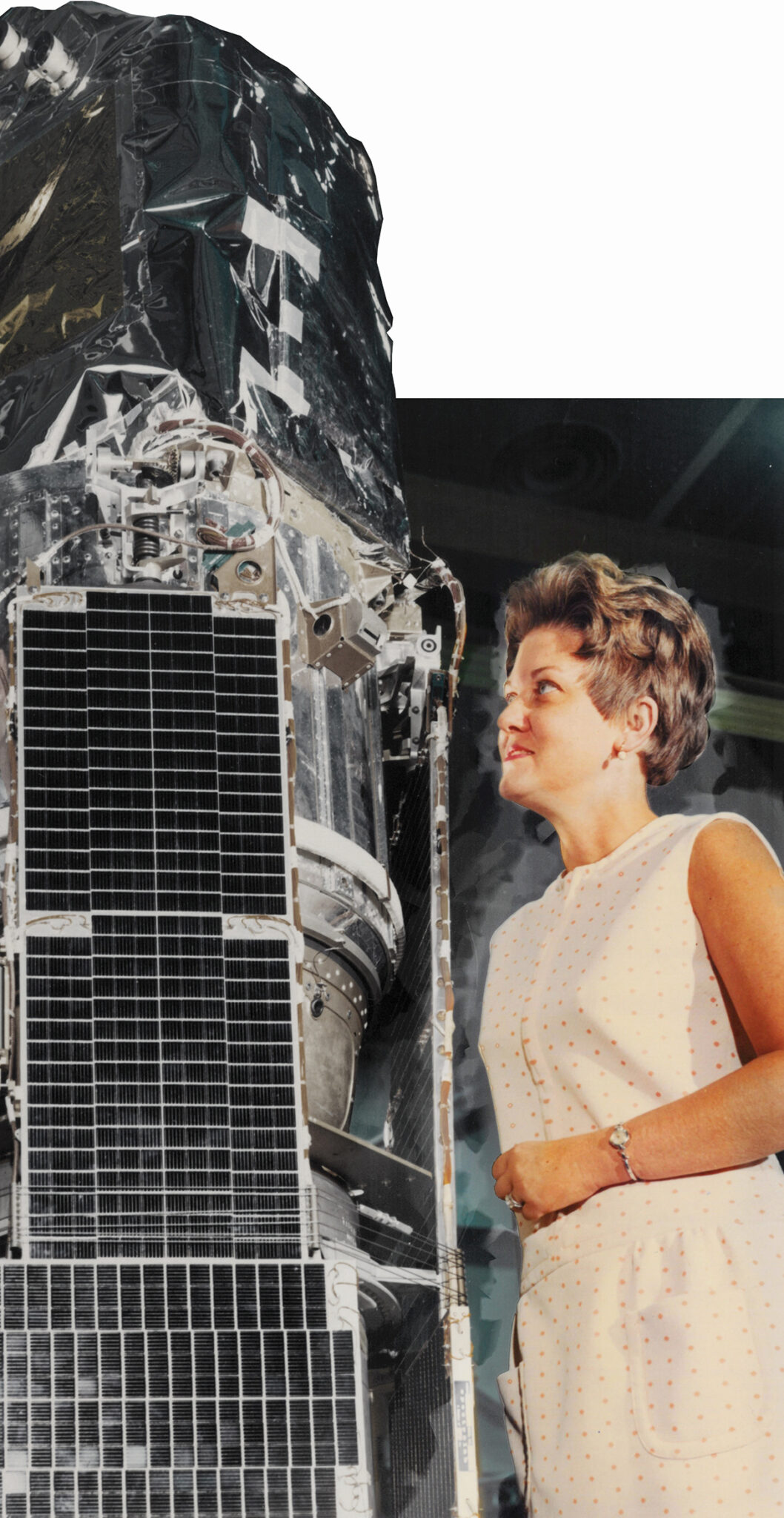
Townsend got a job as an engineer at NASA in the late 1950s. She was engaged in the preparation of instruments for early meteorological satellites TIROS-1 and Nimbus. In 1966, she became the first woman in the history of NASA, appointed to the position of SAS (Small Astronomy Satellite) project manager. Three specialized satellites were launched into space as a part of this project designed to study the sky in the X-ray and gamma ranges.
At this position Townsend was responsible for the design, construction and actual launch of the devices. The launches themselves were performed at the Italian naval launching pad San Marco.
The program proved to be quite successful. SAS satellites have cataloged numerous X-ray sources, discovering a number of previously unknown objects (including exploding neutron stars and supernova remnants), measuring the cosmic background radiation, and collecting data that suggests that the Cygnus X-1 object is indeed a black hole. For her services, Margie Townsend received a number of awards, including the NASA Outstanding Public Leadership Medal and the Order of Merit the Italian Republic.

